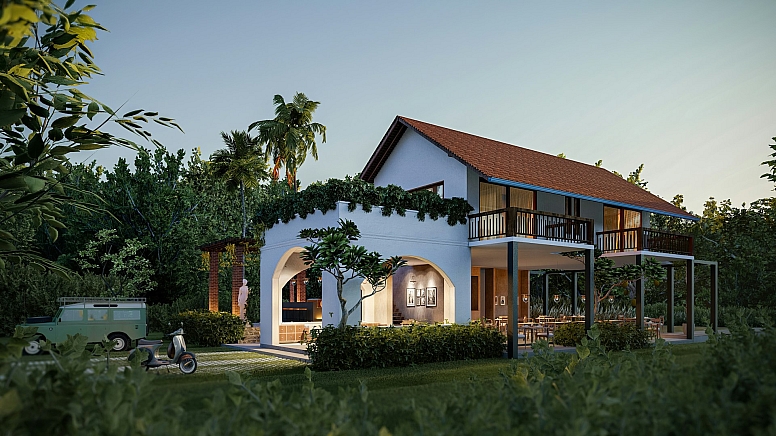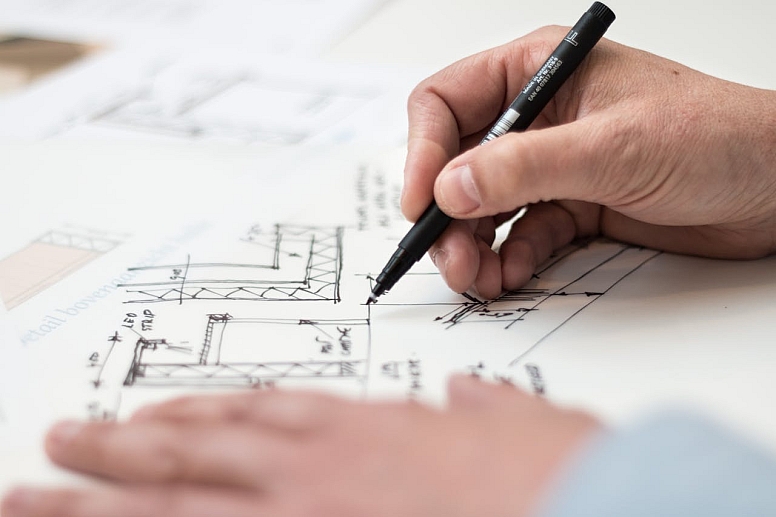
Modern Architecture Trends: Design Innovations & Sustainable Building
The field of architecture is continually evolving, shaped by advancements in technology, sustainable practices, and innovative design approaches. Today’s architects and designers are redefining what’s possible in urban planning, residential spaces, and eco-friendly buildings.
Here are some of the most exciting trends in modern architecture, focusing on design innovations and sustainable strategies that are shaping the future of buildings.
Sustainable Building Materials
As environmental concerns grow, architects are increasingly turning to sustainable materials that reduce a building's ecological footprint. These materials not only lower emissions but also offer durability and aesthetic appeal.
Top Sustainable Materials in Architecture:
- Bamboo: A renewable resource, bamboo is versatile and strong, ideal for structural elements and interior finishes.
- Recycled Steel: Durable and recyclable, steel is a popular choice for eco-conscious architects.
- Green Concrete: Made with industrial by-products, green concrete is a sustainable alternative to traditional concrete.
Biophilic Design: Connecting Indoor Spaces with Nature

Biophilic design is all about integrating natural elements into architecture to create calming, health-promoting environments. From indoor gardens to natural light optimization, this approach improves the well-being of occupants while enhancing aesthetic appeal.
Key Biophilic Elements:
- Green Walls: Living walls not only purify the air but also add vibrant, natural beauty to indoor spaces.
- Natural Lighting: Maximizing daylight reduces energy costs and has proven health benefits.
- Water Features: Indoor fountains and ponds bring a touch of tranquillity to spaces and improve air humidity.
Smart Building Technology for Efficiency
With the rise of IoT (Internet of Things), smart buildings are revolutionizing the way structures operate, from energy use to security. Automation and intelligent systems allow buildings to respond dynamically to environmental conditions, offering enhanced comfort and efficiency.
Popular Smart Building Technologies:
- Automated Climate Control: Adjusts heating and cooling based on occupancy and weather, reducing energy waste.
- Smart Lighting: Motion-activated and energy-efficient LED systems save on power.
- Integrated Security: Advanced security systems use AI to monitor and respond to potential issues in real time.
Ensuring Authenticity in AI-Influenced Architecture

As AI-generated designs become more common, architects and designers are faced with a new challenge: maintaining originality in an era of automated creativity. To help verify the authenticity of design ideas, architects may find it useful to utilize tools like a detector de IA. Such tools can distinguish between human-created and AI-generated concepts, allowing architects to stay true to their creative vision and ensure that their work reflects their unique perspective.
Modular and Prefabricated Building
Modular and prefabricated building techniques are gaining popularity for their efficiency and sustainability. These methods reduce construction time and waste, making them an ideal choice for residential, commercial, and even emergency housing.
Advantages of Modular Construction:
- Speed: Prefabricated modules can be assembled quickly on-site, cutting down on construction time.
- Cost-Effective: Modular construction often costs less than traditional methods due to reduced labour and material waste.
- Flexibility: Modular units are adaptable and can be reconfigured to meet evolving needs.
Adaptive Reuse of Buildings
Adaptive reuse is the practice of repurposing old structures to give them a new life, preserving historical elements while making modern upgrades. This approach combines sustainability with respect for cultural heritage, reducing the need for new materials and construction.
Examples of Adaptive Reuse:
- Industrial to Residential: Transforming factories into loft apartments has become popular in urban areas.
- Historic Buildings as Offices: Old theatres, churches, and schools are repurposed as unique office spaces.
- Mixed-Use Spaces: Blending retail, office, and residential units within one structure adds versatility to urban architecture.
Sustainable Urban Planning for Greener Cities
Urban planning is evolving to create greener, more sustainable cities that meet the needs of a growing population. By incorporating green spaces, pedestrian-friendly streets, and efficient public transport, urban planning is shaping the future of livable cities.
Urban Planning Initiatives to Watch:
- Green Roofs: Adding plants to rooftops helps absorb rainwater and reduce urban heat.
- Public Parks and Community Spaces: These green spaces encourage social interaction and environmental health.
- Bike Lanes and Public Transport: Promoting alternative transportation reduces traffic congestion and emissions.
The Future of Architecture is Innovative and Sustainable
Architecture today is a blend of creativity, technology, and sustainability, driven by a need for innovative solutions that meet modern challenges. From smart buildings and biophilic design to sustainable materials and adaptive reuse, the field is rich with trends that aim to make structures more efficient, beautiful, and environmentally conscious.
As AI-generated concepts become more prevalent, online tools offer a means to maintain authenticity in architectural design, ensuring that creativity remains at the heart of every project.










